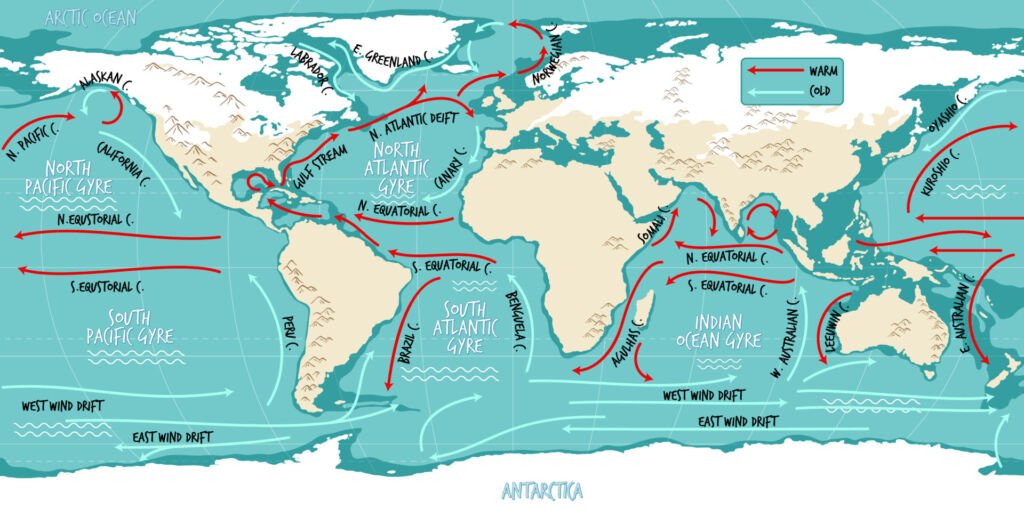Introduction:
Have you ever wondered what geological and environmental forces sculpted the vast, arid expanses of the West Australian Desert? Understanding How the West Australian Desert formed unveils a fascinating interplay of drifting continents, ocean currents, and atmospheric conditions.
The formation of the West Australian Desert is a story that spans millions of years, revealing the intricate connections between Earth’s systems and the delicate balance of life in extreme environments.
From the shifting of tectonic plates to the influence of climatic patterns, we’ll delve into the key factors that shaped the West Australian Desert. Examining How the West Australian Desert formed gives us insight into the region’s past and broader implications for global environmental changes.
Join us as we journey through time and terrain, uncovering the secrets behind the West Australian Desert’s formation and the remarkable adaptations that allow life to thrive in this seemingly inhospitable realm.
Geological Factors in Forming the West Australian Desert:
◆ Formation of Yilgarn Cranton:
The Yilgarn Craton is one of the most primitive geological formations and was also the base of the Western Australian Desert. 2.5 billion years ago, it constituted the granitic and greenstone rocks. The stability of the Cranton has kept its genuine structure intact and made it suitable for interpreting the earth’s crustal development.
Western Australia’s desert formation is a vast expanse formed by continuous geological processes. Tectonic stability and minimum mountain building process have contributed to today’s flat dunes and desert landscape.
The northward movement of Australia is specifically due to the movement of the Australian plate. Australia has been moved from its position as a part of the supercontinent Gondwana. This drift continues as a share of about 7 centimeters per year, considered one of the fast-paced movements in continental plates. The northward movement has a climatic effect; as it moved from Antarctica toward the equator, the climate shifted towards cooler conditions.

◆ Formation of Yilgarn Cranton:
Australia is part of the Indo-Australian plate, influencing the geological and climatic conditions. The plate’s movement towards the northeast has lifted the landmass. The breaking up of the tectonic supercontinent Gondwana has influenced the tectonic plates, and forces have resulted in their shifting.
Climate and Atmospheric Conditions:
◆ Ocean Currents:
The desert in Western Australia is well explained by little evaporation related to the cold sea current of the Western Australian Current of Polar Origin, which denies significant rainfall in the continent’s interior. It is the driest inhabited continent with the least fertile soils.

◆ Rainfall and Atmospheric Patterns:
- As Australia moved away from Antarctica and came closer to the equator, it caused a shifting of weather conditions that led to a more arid climate. The northward movement has caused interactions with other plates, like the Pacific plate, which influenced activities like mountain ranges, the formation of fault lines, and volcanic reactions.
- This continuous northward movement caused the Australian plate to encounter the subtropical high-pressure belt—a zone of descending air that inhibits cloud formation and rainfall. This persistent high-pressure system, combined with Australia’s increasing distance from moisture sources, significantly decreased precipitation across the western regions.
- The northern and southern parts of Australia have different weather conditions. The primary determinant of the weather is the actions of an anticyclone, which creates an east and west direction in the continent for about half the year. The framework moves to the north during winter, responsible for clear skies. In the two locations, the mean annual rainfall is more than 55 inches, but the dry areas receive 8 inches yearly and are near less than 6 inches.
- Continuous weathering creates a significant variation in temperature between day and night and puts a lot of pressure on the rocks, thus breaking them into various pieces. Heavy rain appears in desert regions, but heavy downpours sometimes lead to floods.
- Rain falling on scorching stones can break them into fragments of rocks in the desert, further eroded by the blowing breeze. These fragments remain airborne for extended periods, becoming sand and dust storms. The grains are the thin sheets of sand that form dunes.
Environmental Factors:
◆ Saltlake Formation:
Salt lakes are formed through the evaporation of water in closed basins, leaving behind salt deposits. This framework involves flowing saline groundwater, surface runoff, and no drainage outlet, leading to sallet accumulation.
◆ Ecosystem and Desert Food Web:
Plants and animals adapt to the harsh ambiance of deserts through various processes, including deep root systems for taking in water, nocturnal activity, preventing daytime heat, and conserving water mechanisms. The species include camels, kangaroo rats, deserts, and lizards.
- Camels can live in extreme temperatures of the desert; they have long eyelashes and elongated nostrils that safeguard them from blowing dust and sands; they can easily live without water, the reason being the energy-rich fat stored in their humps.
- Peccary is another type of mammal that likes to have succulent plants and prickly pears.
- Black-tailed Jackrabbits have skin in their ears that is a little thin and packed with blood vessels; when temperatures rise, jackrabbits can maintain blood vessels with the help of their ears by enlarging their blood vessels.
- Roadrunner gets all the moisture from their diet and is only required to sip water.
Conclusion:
In conclusion, the formation of the West Australian Desert results from complex geological and environmental processes. By exploring how the West Australian Desert formed, we uncover the significant roles of plate movements, Australia’s drifting, ocean currents, and atmospheric conditions. These factors make the arid landscape unique.
Understanding how the West Australian Desert formed provides insights into the region’s geological history and highlights the broader implications for global climate and environmental changes. By digging deep into its geological history, climatic influences, and ongoing processes, we gain insights into the forces that have shaped this unique landscape.
References:
- The Editors of Encyclopedia Britannica. (2024b). continental drift. In Encyclopedia Britannica.
- Seafloor spreading. (n.d.). Nationalgeographic.org. Retrieved May 29, 2024, from https://education.nationalgeographic.org/resource/seafloor-spreading/
- What is the mid-ocean ridge?: Ocean Exploration Facts: NOAA Ocean Exploration. (2014). https://oceanexplorer.noaa.gov/facts/mid-ocean-ridge.html
- Wikipedia contributors. (2024b, May 20). Deserts of Australia. Wikipedia, The Free Encyclopedia. https://en.wikipedia.org/w/index.php?title=Deserts_of_Australia&oldid=1224709391
- Western Australiais- is arid, semi-arid,and Mediterranean. (n.d.). In Encyclopedia Britannica.
- Australia – soils, Climate, Erosion. (n.d.). In Encyclopedia Britannica.
- Mukherjee, S. (2023, January 27). Desert food chain. Science Facts. https://www.sciencefacts.net/desert-food-chain.html
- Campbell, K. (2013, May 6). Pollution of the Mojave Desert. Sciencing; Leaf Group. https://sciencing.com/pollution-mojave-desert-21325.htm
- Perry, M. (2006, March 14). Part of the Great Barrier Reef is now ‘a white desert.’ NBC News. https://www.nbcnews.com/id/wbna11821539
How do ocean currents affect the climate of the West Australian Desert?
Ocean currents significantly impact the climate of the West Australian Desert. The cold currents flowing along the western coast of Australia contribute to arid conditions by reducing the amount of moisture that reaches inland areas. Combined with wind patterns, these currents result in lower rainfall and higher evaporation rates, creating the dry environment characteristic of desert regions.
What geological processes contribute to forming the West Australian Desert?
The formation of the West Australian Desert is primarily influenced by geological processes such as plate tectonics and continental drift. The plate tectonics has led to the creation of mountain ranges and basins, altering the landscape and climate.
What role does rainfall play in forming the West Australian Desert?
Rainfall, or the lack thereof, is critical to forming the West Australian Desert. The region’s unfavorable geographical location and climatic conditions allowed it to receive minimal precipitation. Limited rainfall and high evaporation rates prevent the accumulation of moisture necessary for sustaining lush vegetation, leading to the development of desert landscapes.
How has climate change impacted the West Australian Desert?
Climate change has exacerbated the aridity of the West Australian Desert. Rising temperatures and continuous changes in weather patterns have increased evaporation rates and altered rainfall distribution. These changes intensify the desertification process, affecting the ecosystem and the species inhabiting the region.
What types of rocks and soil are found in the West Australian Desert?
The West Australian Desert features a diverse range of rocks and soil types. Common rock formations include ancient sandstones, granites, and sedimentary rocks dating back millions of years. The soil is typically sandy and rocky, with low organic content and poor fertility, contributing to the sparse vegetation and harsh living conditions for plant and animal life.
How do human activities influence the West Australian Desert ecosystem?
Various anthropogenic activities have significantly influenced the West Australian Desert ecosystem. These activities have led to habitat destruction, soil erosion, and pollution, further stressing the fragile desert environment. Sustainable practices and a protective approach are key to mitigating these negative impacts and preserving the desert’s unique biodiversity.





